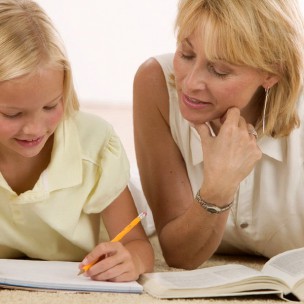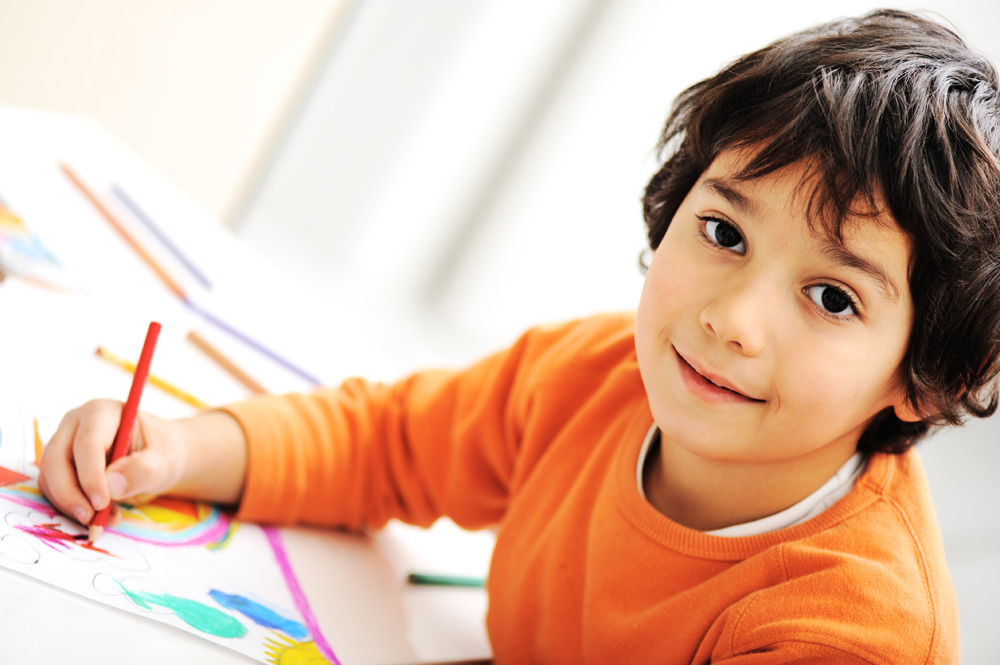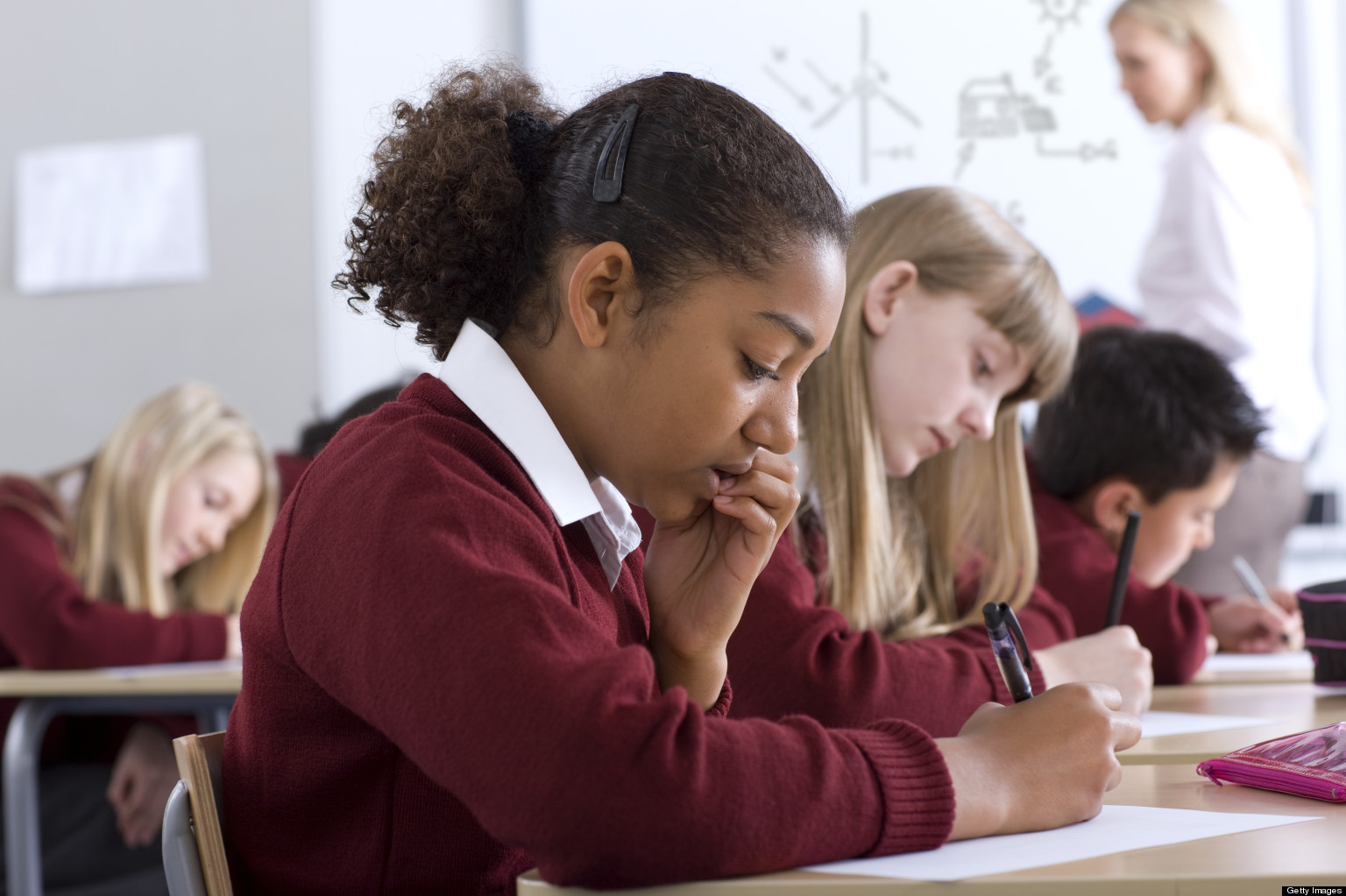Memory is one of the mental processes that can be successfully developed. Regular workouts bring the most efficiency. We offer you some of the well-established techniques.
Exercise "Remember Pairs"
Read the words aloud to your child. You need to try to remember them in pairs. Then only the first words of each pair are read, and the participant writes down the second.
MATERIAL:
1. Chicken - egg, scissors - cut, horse - hay, book - read, butterfly - flower, smile - teeth, tourist - tent, snowflake - winter, rooster - morning, pen - write, assessment - notebook, cow - milk, rails - train, apples - juice, stars - night.
2. lizard - chair, feather - water, glasses - correction, bell - memory, dove - grandfather, watering - tram, comb - wind, boots - fire, door - mother, match - goat, grater - sea, skates - plant, dough - fish, hammer - compote.
Exercise "Images"
Imagine as brightly as possible the corresponding pictures, the names of which will be pronounced. It is best to do this exercise with your eyes closed.
- Lion attacking an antelope
- Dog wagging its tail
- Fly in your soup
- Two in your diary
- Macaroons in a box
- A light in the end of a tunnel
- Lightning in the dark
- A stain on your favorite clothes
- Diamond sparkling in the sun
- Scream of terror in the night
- The Joy of Motherhood
- A friend stealing money from your wallet
Now remember and write down the names of the mental images presented. If you remember more than 8 images, your results are good.
Exercise "Word with a number"
In 40 seconds, try to memorize the 20 suggested words and their sequence numbers. Close the text, on a piece of paper write the words with their serial numbers.
1. Ukrainian. 2. Economy. 3. Porridge. 4. Tattoo. 5. Neutron. 6. Love. 7. Scissors. 8. Conscience. 9. Clay. 10. Dictionary. 11. Oil. 12. Paper. 13. Cake. 14. Logic. 15. Standard. 16. Verb. 17. Breakthrough. 18. Deserter. 19. Candle. 20. Cherry.
Memorization productivity can be calculated as follows: the number of correctly reproduced words is multiplied by 100 and divided by the number of proposed words.
The same can be done with numbers.
Exercise "Remember in order"
Read 10 words. You need to remember the words in the same order as they were presented.
Words: morning, silver, child, river, north, up, cabbage, glass, school, shoe.
Exercise "Number Series"
Rows of numbers are read. You need to write down the numbers you remember. After that, the rows of numbers are read again and the numbers incorrectly reproduced in order and size are crossed out. Missing a number in a row is not considered an error.
Number rows:
53 27 87 91 23 47
16 51 38 43 87 14 92
72 84 11 85 41 68 27 58
47 32 61 18 92 34 52 76 84
Attentiveness and a good memory are the basis of successful schooling. It is possible and necessary to develop these qualities at any age, and every parent should help the child in this.
How to develop memory and attention in a student? The exercises below should be done regularly, but unobtrusively. A small student should not be tired, weary, stay in bad mood. Otherwise, there will be no result from the lessons.
Reading- a universal way to develop memory, literacy, mindfulness. What you read should be recited or learned by heart. It is necessary to use not only visual, but also auditory memory. Voiced phrases and sentences are easier and faster to remember. The child can read aloud or listen to the parent.
Games- help the student to develop in an interesting and exciting way. Chess, checkers, backgammon and even cards require concentration, activate memory and form logic. Famous and popular board games, such as "Monopoly" or "Mafia" have a positive effect on intellectual development child.
In the absence of the necessary inventory, you can get by with your imagination. "Cities" (the parent and child alternately name the cities), "Guess the animal" (one of the players shows the animal, the other guesses) and many others speech games help to spend time with benefit for the little man.
Learning languages- one of the best exercises for the brain. The need to assimilate new information makes the hemispheres work actively and use additional memory reserves. In the future, knowledge foreign language(or even several) will definitely come in handy for the student.
Crosswords- the excitement associated with the performance of the lesson is intertwined with the need to remember, answer questions, guess.
Counting in the mind- not only develops mathematical abilities, but also contributes to the development of ideas, visual memory, forms the imagination. You should start with the simplest examples, gradually complicating the tasks. It is especially easy for schoolchildren to count money, which parents should use. Let the child count the change in the store, the amount of products in the basket, the cost of the bus fare for the whole family.
In order to avoid childhood absent-mindedness, adults should ensure that the following conditions are met:
- the student must sleep fully (at least 8-9 hours a day);
- the distribution of physical and mental stress should be uniform;
- playing sports contributes to the active access of oxygen to the brain, which has a positive effect on well-being, memory and attentiveness;
- after schoolwork the child needs rest (at least 2-3 hours).
The development of memory, attentiveness and intelligence will help the student avoid problems in learning.
You may also like:
 How to help your child get rid of computer addiction
How to help your child get rid of computer addiction
 How to teach a child to fantasize and dream?
How to teach a child to fantasize and dream?
 How to explain fractions to a child: 3-4 grade. Where to begin?
How to explain fractions to a child: 3-4 grade. Where to begin?
 How to develop logical thinking in a child 8-9-10 years old
How to develop logical thinking in a child 8-9-10 years old
 How to train and develop diction and voice in a child
How to train and develop diction and voice in a child
 How to teach your child to write quickly from dictation
How to teach your child to write quickly from dictation
Exercise “What has changed”.
The purpose of the exercise: training observation.
The exercise uses the technique of making changes. The number of changes is discussed in advance. We offer four options for the task: Note what has changed in the room compared to the previous lesson (lesson, afternoon). Find changes in the arrangement of paintings (objects). Within 10 seconds. Children look at drawings, objects that can be arranged in a row. Then the children close their eyes, at this time the order of the pictures changes. It is required to restore the original row. Circle changes. The driver closes his eyes or turns away. The leader without words, with gestures, asks the participants to change places in the lesson. The driver must restore the original location of the participants.
« live photography". The leader or one of the children organizes the participants into any group. A Live Photo may or may not have a story. Participants freeze in a given position. The driver examines the group for 30 seconds, then turns away. A strictly specified number of changes are made to the picture (for example, two participants change places, the third lowers his raised hand, the fourth turns in the other direction - a total of three changes). The task of the driver is to restore the original picture.
The game "Notice and remember."
Purpose of the game: develop visual memory, observation.
The game consists in the following: 7-10 different objects are laid out on the table and covered, for example, with a newspaper. Then, they open it for about 10 seconds, close it again and offer the child to list them. This game can have many options: Open the same items for 8-10 seconds, ask in what order they lie. Swap 2 some objects, show all objects again for 10 seconds. Invite the child to determine which two objects are transferred. Ask the child, without looking at the objects anymore, to say what color each of them is. Put 8 objects one on top of the other, invite the child to list them in a row from bottom to top, and then from top to bottom (consider 20 seconds). Place 5-6 items in different provisions- turn over, put on its side, put on top of each other, one on top of the other, etc. The child must say in what position each object is (show 20 seconds).
Exercise "Transfer of the depicted object."
The purpose of the exercise: training confidence in correct reproduction. The host sets an item, shows the actions that can be performed with this item. The object is not named aloud. The item is “passed around in a circle, and each participant must guess” what to pass, do something with this item and pass it to another. By observing other children, participants gradually feel more and more confident about what is being transmitted. Examples: a kitten, a ball: in a more complex version, everyone passes their item, the next one guesses what he received. This exercise relies on the use of figurative and tactile memory.
The game "Hurry up to remember!"
Purpose of the game: to develop visual figurative and verbal-logical memory. It starts from the simplest: in one minute you need to remember as many confluences as possible (they are written on the board) with a certain vowel, words, objects, geometric shapes. With age, tasks become more complicated, the number of words included in the game increases, and their composition is supplemented by new terms for students, etc.
Scouts game
Purpose of the game: to develop attention and memory. Chairs are randomly arranged in the room. One child (the scout) walks across the room, bypassing the chairs on either side, and the other child (the commander), having memorized the way, must lead the detachment in the same way. Then other children become scouts and commanders. The conditions of the game can be complicated. In general, the game is played in the same way, but only the commander leads the detachment from the place where the scout ended his journey, and to the place from which the scout left.
Exercise "Shapes"
Children are divided into pairs. First, one in a pair lays out matches on the table and covers them with a piece of paper, then, raising it for 1-2 seconds, shows his friend the resulting figure. After looking, the second player closes his eyes and tries to count the number of matches used. Then he opens his eyes and lays out the “photographed” figure from his matches. After that, the first player raises the sheet and checks the number and correctness of the placed matches with the original. Then the players change roles. As you train, a color is added to the quantity and location to remember. You can proceed to the next exercise if the child freely holds at least 10 matches in his imagination.
Exercise "Mental images and their emotional coloring"
The purpose of the exercise: training visual and auditory memory.
The facilitator asks the children to close their eyes and imagine the following scenes: a hornet's nest, a hornet's nest by your door, a hornet's nest by your bed, an old man on a bench, an old man on a bench in the sun, a crying old man on a bench in the sun, a sharp knife, a sharp knife cutting meat , a sharp knife cutting your finger, a bird bathing in a puddle, a bird taking off to escape from a cat. After reading the phrases, the facilitator asks the children to take a piece of paper and write down what they remember.
Exercise "Mental images and emotions"
The purpose of the exercise: training visual memory.
A list of phrases is written on a piece of paper: a lion attacking an antelope; a dog wagging its tail; a fly in your soup; macaroons in a diamond-shaped box; lightning in the dark; a mark on your favorite shirt or skirt; drops sparkling in the sun; a cry of terror in the night; friend stealing your toy. The facilitator gives instructions: “Read the lines below and after each line, closing your eyes, imagine all the phrases, take a piece of paper and try to remember and write them down.”
Exercise "Mental images".
The purpose of the exercise: to develop the ability to recreate mental images. Since children at this age are difficult to keep mental image long enough without reinforcement, it is necessary to use graphic image concepts. The facilitator says to the children: “Try to make some kind of drawing for each of the words I have named after I read all the words.” Sample list of words: truck, anger, fun game, tree of punishment, joy, disease, quick man, warm wind, dark forest, day, good friend, justice, smart cat, lunch .
Exercise "Remember and name."
The purpose of the exercise: to develop observation and visual memory. The exercise is based on looking at and naming details, not memorization. general view subject. Do not try to "perceive" the whole subject at a glance. Perceive the individual details of the subject, imprint them in your mind, then proceed to the next details. We offer the following task options: Describe your favorite toy in detail; Describe the appearance of one of your close acquaintances. Start with a description general form head, nose, chin, mouth, hair and eye color; Detailed observation of buildings. First, try to describe some building that you walk past daily, make up a distant concept of its appearance, shape, color. .
Domino exercise.
The purpose of the exercise: training visual memory.
The exerciser is shown a domino bone and asked to name the number of points without counting, immediately. Then two bones are placed, and so on. With a little practice, anyone can instantly name the total number of points.
Exercise Find the Difference.
The purpose of the exercise: training visual memory.
A plot picture is placed in front of the child, they are asked to look at it for no more than 1 minute and remember what and how is depicted on it. Then it is removed, and another picture is put in place of this picture, it is similar in plot to the previous one, but has some differences. You should also look at it for no more than 1 minute. Then it is removed, and the child is offered to name aloud what differences he noticed. No more than five differences are allowed.
Exercise "Remember and position correctly."
The purpose of the exercise: training visual memory and attention.
Before the child put 6 - 7 cards with pictures. The host says: "Look at how the pictures are arranged." The child looks at them for 10 seconds. Then the pictures are removed and the child is offered to take the pictures and arrange them as they were at the very beginning. With a new presentation, the arrangement of the pictures changes. The task can be complicated by the fact that the child needs not only to arrange the pictures correctly, but also to choose them among others that were not shown to him.
The game "That's the pose!"
The purpose of the game: the development of observation and memory.
At the request of the children, 5 children are selected from the group. One of them is the driver. The rest of the children sit on chairs - they are spectators. Four out of five children show "their poses" to the driver. He walks around the children and memorizes their positions. Then the children sit on chairs, and the leader repeats their poses in the order in which he saw them. "Spectators" shout whether the pose is repeated correctly or not. If wrong, then one of the "spectators" (optional) comes out and repeats the pose that was shown at the beginning of the game. Data guidelines represented by a system of exercises and games aimed at developing the visual memory of mentally retarded children of primary school age.









